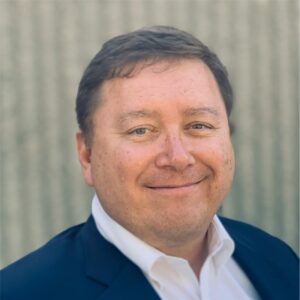The 2023 SAFE international conference is almost here. The conference starts at 9:00 a.m. Pacific time. Here is a preliminary speaker list for August 25.
Register here for the 2023 SAFE conference
| Date: | Time |
|---|---|
| 25-August-2023 | 9:00 PDT |
| 25-August-2023 | 12:00 EDT |
| 25-August-2023 | 17:00 (5:00 pm) BST |
| 25-August-2023 | 18:00 (6:00 PM) SAST |
| 26-August-2023 | 00:00 HKT |
| 26-August-2023 | 4:00 NZST |
Speakers
9:00 – 10:00 PDT
David Tobin – Latest equipment for forensic document examiners
Abstract
This presentation will review the evolution of document examination instruments from Foster & Freeman’s invention of the ESDA in the late 1970s to today’s range of Video Spectral Comparators. Some of the latest techniques will be highlighted and their applications explained.
Bio
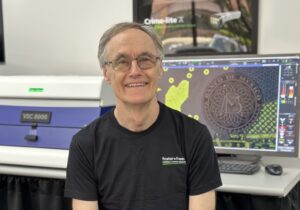 David Tobin is President of Foster & Freeman USA. He originally joined Foster & Freeman’s UK head office in 1997, before transferring to the USA in 2003. David has led the growth of the company’s business in North America since that time.
David Tobin is President of Foster & Freeman USA. He originally joined Foster & Freeman’s UK head office in 1997, before transferring to the USA in 2003. David has led the growth of the company’s business in North America since that time.
10:10 – 11:10 PDT
Carole Chaski, PhD – Forensic Linguistics for Forensic Document Examiners
Abstract
This talk provides a pathway for forensic document examiners to provide forensic linguistic evidence.
First, some background information is covered. Forensic document examination focuses on the physical production of documents with forensic value: these physical characteristics include ink, paper, printing processes, typewriting and handwriting. Forensic linguistics focuses on the language of documents with forensic value: the language of documents include four main aspects of what language analysis can reveal about the provenance of the forensic document. The four main aspects of forensic linguistics are: identification (author, language); text classification (type of text such as suicide note, threat, predatory chat, AI-generated text); intertextuality (textual relations between documents such as plagiarism, summarization or other dependencies); and linguistic profiling (sociodemographic characteristics deducible from language such as native language, dialect, age, sex, education). The forensic document examiner is usually not a linguist, and is therefore not on solid ground opining about language regarding authorship or the other main aspects of forensic linguistic evidence. Likewise, the forensic linguist is usually not a forensic document examiner and is therefore not on solid ground opining about handwriting, paper quality or ink. However, when the boundaries between the two fields is clear, there is an obvious possible collaboration and in some cases where both forensic document examiners and forensic linguist are hired, there is even possible corroboration.
Second, advances in software now make it possible for forensic document examiners to conduct forensic linguistic analysis. Using software does not turn the person into a PhD in linguistics, but rather a forensic linguistics technician; in the same way, using DNA software does not turn the person into a PhD in molecular biology, but a forensic DNA technician. Technicians are crucial to any science. ALIAS: Automated Linguistic Identification & Assessment System enables non-linguists to run the same analysis that doctoral-level linguists use. ALIAS is multi-functional: it provides algorithms for each one of the four main aspects discussed above. ALIAS is multi-lingual: it provides all algorithms for English, and many algorithms for other languages. ALIAS contains three main modules: TATTLER, ATLAS and ALIAS. TATTLER enables the user to conduct text analysis at each level of linguistics: writing system, punctuation, phonology, lexicon, semantics, syntax and discourse. These text analysis routines can be combined and tested for validity and accuracy and used as ALIAS methods (in three categories of ALI, ALEX and ALISTAR). ATLAS provides time billing, invoicing and case management.
Third, ALIAS is demonstrated for use in three case scenarios: (1) is this document a real suicide note or something else? (2) what level of threat does this document contain? (3) what’s the probability that Author A actually authored this document, compared to another potential suspect Author B?
Bio
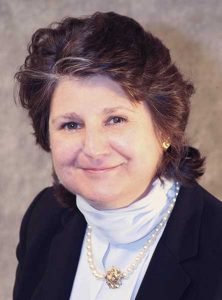 Carole E. Chaski, PhD is the CEO of ALIAS Technology LLC (founded in 2007) and Executive Director of the Institute for Linguistic Evidence, the first non-profit research organization devoted to research and development in linguistic evidence (founded in 1998).
Carole E. Chaski, PhD is the CEO of ALIAS Technology LLC (founded in 2007) and Executive Director of the Institute for Linguistic Evidence, the first non-profit research organization devoted to research and development in linguistic evidence (founded in 1998).
Chaski began work in forensic linguistics in 1992 and is credited with pioneering the field of forensic computational linguistics. She has developed methods and software for authorship identification and classification of specific discourse types, such as threat letters, suicide notes, child sex-abuse allegations, predatory chats, and deceptive witness statements. She has consulted on cases in North America, South America, Europe, Asia and Australia.
Chaski was the first person to develop software for forensic linguistics, ALIAS: Automated Linguistic Identification & Assessment System, which is a web-accessible system so that non-linguists can use doctoral level linguistic analysis.
Chaski has served as an expert witness in Federal and State Courts in the United States, in Canada and in The Hague; she has provided unrestricted testimony on linguistic issues in Federal State, and Military courts after Daubert and Frye hearings. She was the first linguist in the United States to successfully undergo a Daubert hearing for the admissibility of authorship identification evidence based on computational linguistics. She is also the first linguist in the United States to successfully be admitted under a Frye hearing for the admissibility of evidence based on the linguistic capacity method for authorship identification and the text-typing method for text-type assessment. Her methods have been used in US, Canada, Europe, Asia and Australia.
Chaski has been invited to lecture on forensic linguistics at University of Michigan, Duquesne University, Princeton, University of Bonn (Germany), Chungbuk National University (Korea), National Police University of China (China), University of Murcia and University of Alicante (Spain), Murcia Guarda Civil, Spanish Air Force Academy (CUD), FBI Academy and United States Secret Service.
She has presented her research at universities such as Stanford, Yale, Princeton, Pennsylvania, Brown, Northwestern, Chicago, Michigan, and Mary Washington, and at conferences such as the Linguistic Society of America, the American Academy of Forensic Science, Law and Society Association, the International Academy of Law and Mental Health, the International Classification Society, IEEE Homeland Security, the International Association of Forensic Linguistics, the International Language and Law Association, the American Pragmatics Association, the International Pragmatics Association, and The Association for Linguistic Evidence.
She has taught “Linguistics as a Forensic Science” at the Linguistic Society of America’s Summer Institute at the University of Michigan, University of Chicago and University of California- Davis. She has published over 60 abstracts, articles and book chapters in forensic linguistics. Chaski holds a US patent in authorship identification.
Chaski held a Visiting Research Fellowship (1995-1998) at the US Department of Justice’s National Institute of Justice (NIJ). Chaski was the first person to receive Federal funding for forensic linguistic research in the USA, and she has subsequently helped other researchers win funding. During her fellowship, Chaski developed the first linguistic corpus designed for research in forensic linguistics and conducted the first empirical testing for popular linguistic methods of determining authorship of forensic texts.
Chaski earned her doctorate and master’s in linguistics (syntax, language variation and computational linguistics) at Brown University, her master’s in psychology of reading (psycholinguistics) at the University of Delaware and her bachelor’s magna cum laude in English and Ancient Greek from Bryn Mawr College.
11:20 – 12:20 PDT
Dave Zweig – Update on Zarbeco microscope products
Abstract
Zarbeco’s latest products include a new higher resolution MiScope, the MiScope-MP4K with 360X magnification and 13 megapixel camera, and our just released polyspectral imaging MiScope which has full Bluetooth control over the choice and brightness of all of the light sources. This lets you mix or combine any of the built-in lights – in additional to external lights such as a back or side light. I am putting together an explainer to show the advanatages of this for examining documents and capturing images that display your findings. More to come on this.
Bio
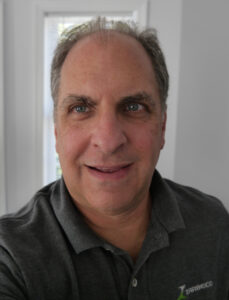 Dave Zweig has a Bachelors and Masters degree in Optics from the Institute of Optics at the University of Rochester. He spent 10 years working for a defense contractor in the area of large space optics, including extensive involvement with NASA’s Chandra X-Ray Telescope. Mr. Zweig founded Zarbeco, LLC in 2001 to commercialize the then, newly-developed USB imaging technology, including USB cameras and microscopes. The MiScope handheld digital microscope was introduced in 2004. Zarbeco was one of the first companies to offer a compact USB microscope with IR and UV illumination, and continues to develop products that cater to document examiners
Dave Zweig has a Bachelors and Masters degree in Optics from the Institute of Optics at the University of Rochester. He spent 10 years working for a defense contractor in the area of large space optics, including extensive involvement with NASA’s Chandra X-Ray Telescope. Mr. Zweig founded Zarbeco, LLC in 2001 to commercialize the then, newly-developed USB imaging technology, including USB cameras and microscopes. The MiScope handheld digital microscope was introduced in 2004. Zarbeco was one of the first companies to offer a compact USB microscope with IR and UV illumination, and continues to develop products that cater to document examiners
1:00 – 2:00 PDT
Dustin Eaton, CFE – Detecting Document Fraud
Abstract
History is full of well-known examples of forged and fake documents. From Ancient Rome to the early 1900s use of fraudulent documents to spread lies about Jews. As with many periods of history, environments of high inflation or economic uncertainty correlate to the increases in fraud. Today this conditions exist and as such we are seeing a resurgence in cases of document fraud, especially check fraud.
The use of fraudulent documents fuel underground and criminal organizations helping to facilitate criminal activities like human trafficking, narcotic distribution, benefits fraud, identity theft and beyond.
Today I will explain what’s behind the proliferation of this age-old scam and the methods specialist can employ to stop it in its tracks with modern technology.
Bio
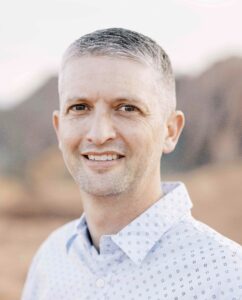 Dustin published an article entitled “Detecting document fraud” in the July/August 2023 Fraud Magazine from the ACFE. A forthcoming article is planned for September on Healthcare Payments Fraud, with several others in draft on a variety of topics within fraud.
Dustin published an article entitled “Detecting document fraud” in the July/August 2023 Fraud Magazine from the ACFE. A forthcoming article is planned for September on Healthcare Payments Fraud, with several others in draft on a variety of topics within fraud.
Dustin has over 20 years of service in the financial service where he has had roles in both operations and risk. Dustin was previously licensed with several securities licenses including the series 7, 66 and 26. Dustin’s roles in Fraud and Risk Management include primary responsibility for strategy, identification, management, and execution of fraud and risk prevention. Dustin is employed at Wells Fargo working within the Wealth and Investment Management line of business where he helps govern the fraud risk management and identity theft programs. Dustin has successfully engaged leaders of cross-functional teams, managing multiple vendor integrations and technology enhancements in pursuit of mitigating gaps, reducing risk and enhancing controls.
Dustin earned a Master of Business Administration (MBA) from California State University—Dominguez Hills as well as a Master of Science in Business Ethics and Compliance (MS) from New England College of Bus. & Finance (Cambridge College). In addition, he has stayed relevant in the Financial Crimes industry by obtaining multiple certifications including the Certified AML and Fraud Professional (CAFP), Certified Global Sanctions Specialist (CGSS), Certified Financial Crimes Specialist (CFCS), Certified Financial Crimes Investigator (CFCI), Certified Anti-Money Laundering Specialist (CAMS), Certified Fraud Examiner (CFE) and others.
2:10 – 3:10
Mike Wakshull – Photoshop tips and tricks
Abstract
Photoshop is a powerful tool for forensic document examiners. It is used to create overlays, perform detailed analysis of documents including scans of hardcopy documents and electronic documents such as PDF and JPEG.
Methods will be shared for extracting signatures from documents, creating overlays, and other analytical techniques.
Bio
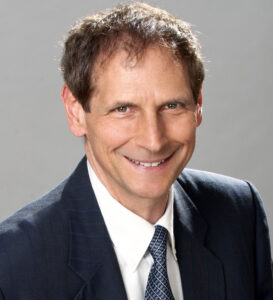 Mike Wakshull is vice president of SAFE. He has worked as a forensic document examiner since 2010 – Full time since January 2012. Mike worked in information systems for 30 years. His experience includes founding a computer graphics software company for which he wrote the software that creates images on monitors, printers, plotters, cameras, and other devices. He managed Information Systems Policies and Standards at Amgen, the largest biotechnology company at the time.
Mike Wakshull is vice president of SAFE. He has worked as a forensic document examiner since 2010 – Full time since January 2012. Mike worked in information systems for 30 years. His experience includes founding a computer graphics software company for which he wrote the software that creates images on monitors, printers, plotters, cameras, and other devices. He managed Information Systems Policies and Standards at Amgen, the largest biotechnology company at the time.
3:20 – 4:20 PDT
Justin Brooks, Esq. – You may go to prison even though you are innocent
Abstract
Professor Brooks will talk about the top ten reasons for wrongful convictions in the United States based on his own work and research documented in his book “You Might Go to Prison, Even Though You’re Innocent.” He will also talk about remedies needed to decrease the number of wrongful convictions.
Bio
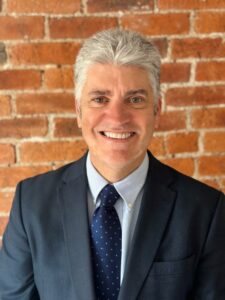 Justin Brooks is a Professor of Practice at University of San Diego School of Law where he teaches criminal procedure, directs an LL.M. Program in Comparative Law in Spanish, administers a national moot court program in Mexico, and coordinates the work of 35 innocence organizations in Latin America. He was the Founding Director of the California Innocence Project from 1999-2023, and under his direction the project freed 40 innocent people from prison (including former NFL player Brian Banks). He has been recognized several times by the Los Angeles Daily Journal as one of the Top 100 Lawyers in California, and in 2010 and 2012, California Lawyer Magazine honored him with the “Lawyer of the Year” award. He was named “International Lawyer of the Year” by the California Bar International Section in 2020 and in the same year was named “Champion of Justice” by the National Association of Criminal Defense Attorneys. He is the author of the only legal casebook devoted to the topic of wrongful convictions and the author of “You Might Go to Prison, Even Though You’re Innocent,” a book that details the causes of wrongful convictions based on his experience of more than three decades as a criminal defense attorney and innocence organization director. He is portrayed by Academy Award nominated actor Greg Kinnear in the feature film, “Brian Banks.”
Justin Brooks is a Professor of Practice at University of San Diego School of Law where he teaches criminal procedure, directs an LL.M. Program in Comparative Law in Spanish, administers a national moot court program in Mexico, and coordinates the work of 35 innocence organizations in Latin America. He was the Founding Director of the California Innocence Project from 1999-2023, and under his direction the project freed 40 innocent people from prison (including former NFL player Brian Banks). He has been recognized several times by the Los Angeles Daily Journal as one of the Top 100 Lawyers in California, and in 2010 and 2012, California Lawyer Magazine honored him with the “Lawyer of the Year” award. He was named “International Lawyer of the Year” by the California Bar International Section in 2020 and in the same year was named “Champion of Justice” by the National Association of Criminal Defense Attorneys. He is the author of the only legal casebook devoted to the topic of wrongful convictions and the author of “You Might Go to Prison, Even Though You’re Innocent,” a book that details the causes of wrongful convictions based on his experience of more than three decades as a criminal defense attorney and innocence organization director. He is portrayed by Academy Award nominated actor Greg Kinnear in the feature film, “Brian Banks.”
SAFE Conference Day 2
| Date: | Time |
|---|---|
| 22-September-2023 | 9:00 PDT |
| 22-September-2023 | 12:00 EDT |
| 22-September-2023 | 17:00 (5:00 pm) BST |
| 23-September-2023 | 18:00 (6:00 PM) SAST |
| 23-September-2023 | 00:00 HKT |
| 23-September-2023 | 4:00 NZST |
9:00 – 10:00 PDT
Pàvlos Kipouràs – What about Forensic Graphology?”
Abstract
Short analysis and definition of terms regarding “Graphology” focusing on Forensic Graphology. Reference to different methodological approaches and forensic mentalities of expertise throughout world and their practical application in the forensic research. Expression of thoughts regarding the scientific recognition and validity of terms used in practice in forensic document examination. The scientific role of Grapho-biometrical signatures.
Bio
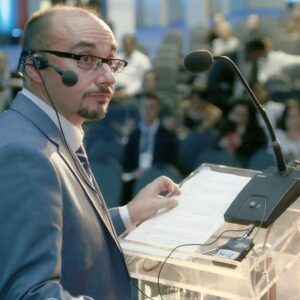 Pàvlos Kipouràs was born in Athens, Greece. He graduated Law School in “Dimokriteion University of Thrace” in Greece in 1996 and Forensic Graphology in “Università degli Studi di Urbino ‘Carlo Bo’” of Italy in 2000. After finishing the Master of ‘Graphological (Forensic) Expertise & Professional Consultancy’ in “Università degli studi di Urbino ‘Carlo Bo’” in 2006, he graduated in ‘Graphological Techniques” in Università degli studi di Urbino ‘Carlo Bo’ of Italy in 2008. He earned his PhD in ‘Forensic Graphology as an Expertise’ in “Dimokriteion University of Thrace”, Greece, 2009 and continued his studies with a Diploma of ‘Specialization in Criminalistic Graphology’ in “Università Pegaso” of Italy in 2013. He became an expert of ‘Grapho-biometric Signatures’ in “Centro Studi Grafologici” (CeSGraf), Italy in 2020 and attended the ‘Corso di Alta Formazione’ (Advanced Training Course) ‘Dalla firma Grafometrica alla Grafo-Bio-Metria’ in “Digital Forensic Department” of Prato, Florence, Italy, in 2023. He is an Attorney at Law since 1998, a Document Examiner/Forensic Graphologist since 2001 and Professional Graphologist since 2006.
Pàvlos Kipouràs was born in Athens, Greece. He graduated Law School in “Dimokriteion University of Thrace” in Greece in 1996 and Forensic Graphology in “Università degli Studi di Urbino ‘Carlo Bo’” of Italy in 2000. After finishing the Master of ‘Graphological (Forensic) Expertise & Professional Consultancy’ in “Università degli studi di Urbino ‘Carlo Bo’” in 2006, he graduated in ‘Graphological Techniques” in Università degli studi di Urbino ‘Carlo Bo’ of Italy in 2008. He earned his PhD in ‘Forensic Graphology as an Expertise’ in “Dimokriteion University of Thrace”, Greece, 2009 and continued his studies with a Diploma of ‘Specialization in Criminalistic Graphology’ in “Università Pegaso” of Italy in 2013. He became an expert of ‘Grapho-biometric Signatures’ in “Centro Studi Grafologici” (CeSGraf), Italy in 2020 and attended the ‘Corso di Alta Formazione’ (Advanced Training Course) ‘Dalla firma Grafometrica alla Grafo-Bio-Metria’ in “Digital Forensic Department” of Prato, Florence, Italy, in 2023. He is an Attorney at Law since 1998, a Document Examiner/Forensic Graphologist since 2001 and Professional Graphologist since 2006.
Adviser of the «State Committee of Cinematography» of the Greek Ministry of Civilization since 2012.
Prof of “Pegaso University” of Italy (2015-2016), Prof “Scuola Forense di Grafologia” (SFG) (2016-2023) and “Scuola di Grafopatologia Forense” (SGF) (2018-2023) of Naples, Italy. Specialist in Grapho-biometric signatures (2020), Senior Researcher of South Ural State University of Russia since 2020 and Research Adviser since 2021. Prof of ‘Scuola Superiore di Perizie’ (SSP) since 2021 and Prof of “Centro di Studi Grafologici” (CeSGraf) of Rome, Italy since 2022.
Member of the Athens Bar Association of Lawyers, ENOBE (Association of Lawyers of North Greece), ΠΕΔΙΚΓΡΑΦ (Greek Association of Document Examiners), Associazione Grafologica Italiana (AGI), CIGMe (Centro Internazionale di Grafologia Medica), Slovak Graphological Society, CeSGraf (Centro Studi Grafologici), AGRAGI (Associazione Grafologica Giudiziaria), Associazione Nazionale Grafologi Forensi ed Esperti Documentali (Anigrafed) and Scientific Association of Forensic Examiners (SAFE).
Kipouràs has been a speaker in 61 international conferences, seminars and lectures in 16 countries throughout world (USA, Italy, Poland, Slovakia, China, Brazil, Venezuela, India, China, Canada, Czech Republic, Italy, Ukraine, Russia, Lithuania, Romania), author of more than 25 published scientific articles and author of the book “Forensic Graphology as an Expertise” published in 2009 in Greece (Ed. Ant.N.Sakkoulas).
Kipouràs has recently been invited to lecture on Forensic Graphology at “Manipal University” of Jaipur, India and has served as an expert witness in USA, Greece and Cyprus.
He is an Editorial Board Member of ‘International Journal of Law in Changing World’ (IJLCW) since 2021 and ‘Journal of Digital Technologies and Law’ (JDTL) since 2022.
10:10 – 11:10
David Notowitz – Advanced Forensic Video Techniques to Identify and Track Subjects — Get Clarity and Think Outside the Box
Abstract
That line becomes increasingly blurry when it comes to digital video and audio evidence. Can we use evidence from a YouTube video to help our clients explore the facts of a case? How can such evidence be accepted in court?
Through three case studies from matters brought to the forensics company, NCAVF, David Notowitz will explore multiple techniques for tracking and understanding actions and identifying individuals seen and heard in video and audio evidence. From the use of synchronization and magnification of video recordings to waveform analysis and clarification of audio, lead forensic expert and president of the National Center for Audio and Video Forensics will describe and demonstrate the steps taken to achieve results for their clients.
Bio
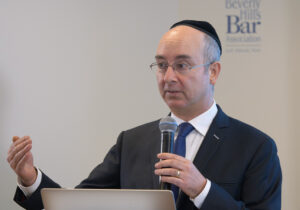 Mr. Notowitz is an Emmy award winning producer and multi-faceted video and audio evidence expert. His past specialties include commercial, feature film, and event video production. In 1986 he started Notowitz Productions and produced daily segments for the Financial News Network (later bought by CNBC).
Mr. Notowitz is an Emmy award winning producer and multi-faceted video and audio evidence expert. His past specialties include commercial, feature film, and event video production. In 1986 he started Notowitz Productions and produced daily segments for the Financial News Network (later bought by CNBC).
He produced and edited corporate videos for clients such as Fox, Yahoo, GM, The Learning Channel, Rhino Entertainment, Miller Beer, IBM, Disney, Pepperdine University, University of California, and UBS Investment Bank. Notowitz Productions produced award winning films and documentaries, including Voices Of The Shoah: Remembrances Of The Holocaust, for Warner Bros., and the Emmy-nominated Carpati, which was named by the San Diego Union Tribune as one of the top ten films of 1997. He was also the editor of the nationally acclaimed 1992 documentary The Last Klezmer.
Professional awards include an L.A. Emmy and two nominations and three CableACE nominations. Mr. Notowitz created NCAVF, the National Center for Audio and Video Forensics, and has worked as a forensic audio and video expert on many cases assisting police officers, private detectives, insurance investigators, district attorneys, public defenders, and corporate attorneys with cases across the country. His evidence analysis has provided assistance to attorneys involved in criminal and civil litigation, federal and state cases, and with plaintiff, prosecution, and defense. A few of the largest corporate clients include Kroger, Target, Home Depot, PetSmart, Southwest Airlines, and McDonalds.
He is appointed to the Los Angeles Superior Court Expert Witness Panel, is approved by the California State Bar as an MCLE provider, and is approved by public defenders and federal courts across the country. Speaking engagements include public defender offices, private attorney firms, and bar associations and conferences around the country.
David Notowitz has been a video forensic consultant for numerous print and television media, including Fox News, CNN, WGN Chicago, The Insider, USA Today, ABC News, KCBS Radio & TV, Inside Edition, and The Young Turks. Prominent court work includes his involvement as a video expert with the nationally covered Ivory Webb case.
Television, radio, and print coverage of the case included major national and local news outlets, from the Today Show to CNN to the New York Times. William Hadden, a partner in the law firm that defended officer Webb, wrote details of NCAVF’s contributions in the PORAC Law Enforcement News.
11:20 – 12:20
Kevin P. Kulbacki, MSFS, D-ABFDE – The ANSI/ASB Standards for Forensic Document Examination – What they Are and How to get Involved
Abstract
Kevin will review the ANSI/ASB handwriting standard that was published in October 2022. This standard supersedes the ASTM/SWGDOC and SAFE handwriting standards. Kevin will review all the new ANSI/ASB standards and inform us how we can become involved in the development of the standards.
Bio
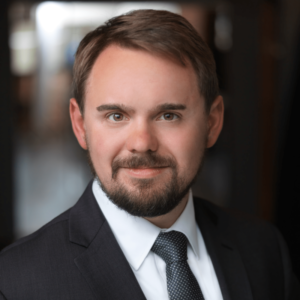 Mr. Kulbacki is a Forensic Document Examiner and Handwriting Expert bringing a decade of Forensic Document Examination expertise to KDX. His education and training include a Bachelors in Forensic Science from the University of Central Florida in 2011, a Masters in Forensic Science from the University of Florida in 2014, and formal training in Forensic Document Examination from industry expert John Paul Osborn, owner of Osborn & Son (the oldest Forensic Document Examination laboratory in the U.S.) where he completed his two-year, full time apprenticeship in Forensic Document Examination in accordance with the SWGDOC Standard for the Minimum Training for Forensic Document Examiners in 2014.
Mr. Kulbacki is a Forensic Document Examiner and Handwriting Expert bringing a decade of Forensic Document Examination expertise to KDX. His education and training include a Bachelors in Forensic Science from the University of Central Florida in 2011, a Masters in Forensic Science from the University of Florida in 2014, and formal training in Forensic Document Examination from industry expert John Paul Osborn, owner of Osborn & Son (the oldest Forensic Document Examination laboratory in the U.S.) where he completed his two-year, full time apprenticeship in Forensic Document Examination in accordance with the SWGDOC Standard for the Minimum Training for Forensic Document Examiners in 2014.
Mr. Kulbacki is also certified as a Diplomate of the American Board of Forensic Document Examiners (D-ABFDE), and has worked as a Senior Criminalist in Questioned Documents for the South Carolina Law Enforcement Division (SLED), where he aided investigations into anonymous notes, threatening manifestos, and fraud. Mr. Kulbacki has also worked as a Forensic Document Examiner for the Internal Revenue Service’s Criminal Investigation Division’s National Forensic Laboratory, where he aided investigations into fraud, identity theft, and public corruption.
In addition to his extensive experience as a Forensic Document Examiner, Mr. Kulbacki is an active member of the Forensic Document Examination community participating in standards development and professional organizations, leading independent research, and serving as a lecturer for various companies and universities around the world.
1:00 – 2:00
Doug Cobb – New Concepts in Paper Forensics
Abstract Forthcoming
Bio
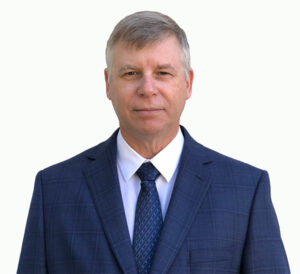 Doug Cobb is a Paper Scientist and Document Security Expert with over 29 years of professional experience, fourteen as a Forensic Document Examiner. He specializes in the investigation and analysis of forged or altered documents, specifically where there is suspicion that sections were inserted, modified, or copied and pasted from other sources. He has developed unique paper solutions for companies such as Hewlett Packard, Xerox, Canon, McDonald’s, and Deluxe Check.
Doug Cobb is a Paper Scientist and Document Security Expert with over 29 years of professional experience, fourteen as a Forensic Document Examiner. He specializes in the investigation and analysis of forged or altered documents, specifically where there is suspicion that sections were inserted, modified, or copied and pasted from other sources. He has developed unique paper solutions for companies such as Hewlett Packard, Xerox, Canon, McDonald’s, and Deluxe Check.
Through this experience as a Paper Scientist, he has developed new science-based methodologies to eliminate document fraud and improve document security, including processes to determine if questioned documents come from the same source or paper. He has developed two patent pending technologies for advancements in forensic document examination and legal document security, ScanRite Paper ID Technology and SecureDoc-DNA.
Doug earned his Bachelor of Science degree in Forest Products, with a specialization in Paper Science and Engineering from the University of Minnesota. He is a frequent invited speaker at professional organizations for document examiners and handwriting experts, including training sessions on topics of paper and print characteristics, and legal document security. He is an active member of SAFE, the Scientific Association of Forensic Examiners and ACFE, the Association of Certified Fraud Examiners.
2:10 – 3:10
John Troxel – Computer forensics as a compliment to document forensics
Abstract – Forthcoming
John Troxel manages cases requiring technological expertise, including electronic discovery, computer forensics, online research and construction of project databases. An investigator since 1997, he’s directed cases all over the country as well as several overseas, with proficiency in developing evidence from computers and associated media, finding people, interviewing, corporate investigations, background searches and pollution liability disputes. John is frequently engaged to identify, collect, analyze and produce electronic evidence on digital storage media such as hard drives, cell phones, etc.; and qualified in California Superior Court to provide expert testimony. He is often asked to speak on issues relating to electronic evidence.
He has nearly 500 hours of specialized training with AccessData, NTI/Armour, Association of Certified Fraud Examiner’s Academy, High Technology Crime Investigation Association, Paraben Forensics and Techno Security. He received his California PI License #22186 in 1999, Professional Certificate in Computer Forensics from Oregon State University in 2003, and qualified as an AccessData Certified Examiner in 2007.

